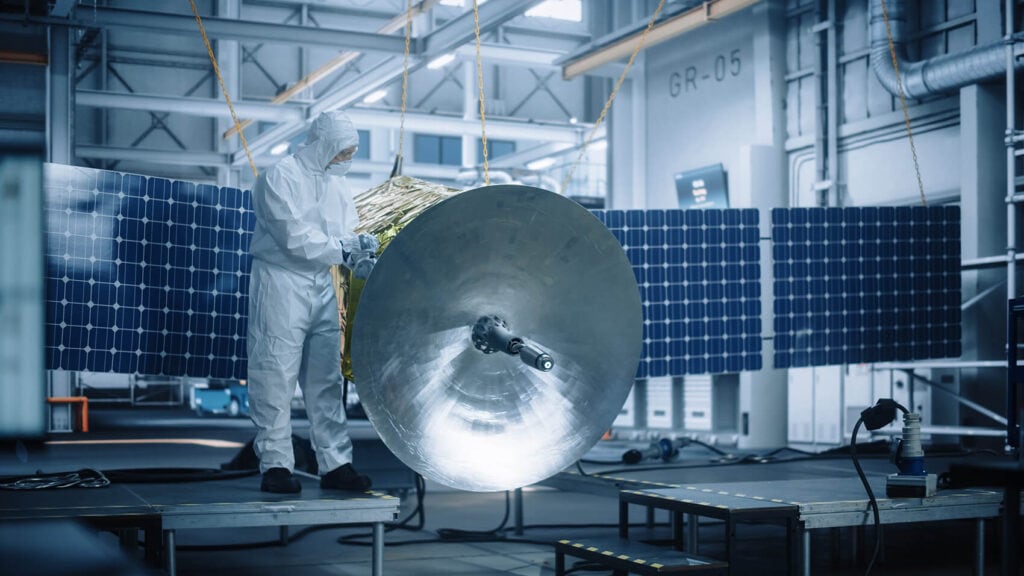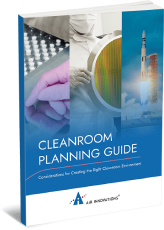Tag: Cleanroom
Deciding between a clean room vs. a controlled environment requires a thorough understanding of your application and facility requirements. Some operations even use both, reserving a cleanroom for certain quality controls and more sensitive tasks. Read on to learn what controlled and cleanroom environments are, and what types of applications each is best suited for.
What is a Controlled Environment?
Controlled environments are spaces that control several local factors by adjusting resource inputs and outputs. Generally, the functions regulated by a controlled environment include the following:
- Temperature
- Humidity
- Light spectrum and intensity
- Airflow
- Carbon dioxide and oxygen levels
Controlled environments don’t need to meet particle filtration thresholds like cleanrooms do. Instead, their certification requirements are based on factors such as temperature and humidity controls. These must be periodically measured and logged, so the environmental controls can be adjusted accordingly.
If your requirements primarily revolve around temperature and/or humidity control, without the need for strict cleanliness or filtration, a controlled environment will meet your needs.
Common Applications for Controlled Environments
Controlled environments are used in numerous industries:
- Life science laboratories
- Engineering labs
- Laser labs
- High-energy physics facilities
- Quality labs
- Grow Rooms (e.g. greenhouses, indoor farming, cannabis)
- Clean manufacturing rooms
- Pharmacies
- Quarantine sections of hospitals
For the latter, the most important controls include humidity, airflow, temperature, and lighting. Controlling humidity and air exchanges can dramatically reduce the transmission of pathogens.
What is a Cleanroom?
Cleanrooms are a specialized type of controlled environment. They require more stringent controls on temperature and pressure, and their local air supply must be kept separate from the outside environment. Cleanrooms filter contaminants at the microscopic level, maintaining air purity with a High-Efficiency Particulate Air (HEPA) filtration system.
Cleanrooms are required to meet ISO 14644-1 or FED Std 209E standards, which takes into account both the cleanliness and the number of air changes per hour. This is necessary to maintain precise filtration and particulate controls.
To certify that one of these classifications is being met, a room needs to be particle tested and have continual measurements of air pressure and filtration.
Some industries and applications will have additional cleanroom requirements, such as ASTM E2352 for Aerospace cleanrooms. Semiconductor companies require cleanrooms rated at Class 5 or lower, along with their own “SEMI” industry standards. Pharmaceutical and medical industries have other specific cleanroom standards.
Common Applications for Cleanrooms
What a cleanroom is used for depends on how sanitary a lab or other setting must be for a given application. Highly valuable equipment depends on accurate cleanroom controls, which are set by a classification system outlined in ISO-5/class 100 and ISO-6/class 1000.
There are also industry-specific cleanroom standards. The most common cleanroom types are as follows:
- Semiconductor manufacturing cleanrooms
- Pharmaceutical manufacturing cleanrooms
- Research and development cleanrooms
- Laser and optics cleanrooms
Cleanroom or Controlled Environment: Which Option is Right?
When deciding between a cleanroom and a controlled environment, the primary considerations are (A) the application and (B) the industry involved.
Generally, when a project requires environmental controls for stable temperatures and humidity, a controlled environment is what you need. If the application requires contaminant levels to be less than a specific threshold, a cleanroom is necessary.
This commonly applies to industries using highly sensitive electronics or purified chemical substances. The most common industries and applications for cleanrooms include the following:
- Semiconductors & Microelectronics
- Military & Aerospace
- Hospital isolation rooms
- Biotech
- Pharmaceutical
- Medical device manufacturing
For most other laboratory environments, controlled environments are usually acceptable. For instance, a process control laboratory working with chrome plating depends on stable environmental controls, but not at the level of a cleanroom.
Other applications for controlled environments include the following:
- Biotech
- Mining
- Agricultural research and food production
Facilities sometimes use both a controlled environment and cleanroom. For example, a laboratory might perform quality control testing in a certified ISO class 8 cleanroom but store the materials in a controlled environment if they don’t need to be kept at strict levels of cleanliness.
Contact Air Innovations for Cleanroom Environmental Control Solutions
Deciding between a controlled environment vs. a cleanroom is not difficult once you’ve clarified your application. For cleanrooms, several industries have specific cleanroom standards, in addition to fundamental national and international standards. Contact Air Innovations to learn more about cleanroom air purification. Our air filtration engineers have continually advanced cleanroom HVAC systems, including our customizable HEPAir and AdvancAir systems. The Air Innovation product line is built for a wide range of industrial, laboratory, and specialized uses, and our knowledgeable service technicians are standing by to assist you.



